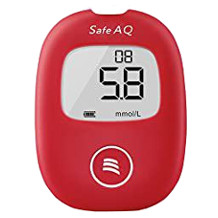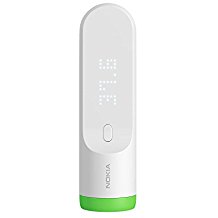Upper arm blood pressure monitor purchasing advice: how to choose the right product
- What You Need to Know
- Measuring blood pressure on the upper arm is more accurate than measuring it on the wrist because the vessels there are narrower.
- The right size of cuff is crucial to guarantee valid results.
- Upper arm sphygmomanometers not only measure blood pressure, but also check for arrhythmias based on average values.
- Advanced age, obesity and pre-existing conditions can lead to high blood pressure, as can stress, physical exertion or emotional excitement.
Regular control for steady health
High blood pressure is not uncommon these days, and it is not just a matter of age: stress and emotions such as anger or fear can also lead to elevated blood pressure in young people, which needs medical control and possible treatment. To measure blood pressure and get comparative values, many people go to the doctor regularly. But in the meantime, blood pressure monitors are no longer only found in hospitals, doctors’ surgeries or pharmacies. The handy and easy-to-use devices are a sensible purchase for anyone who wants to protect themselves with regular checks. With an upper arm blood pressure monitor, you not only help your doctor to keep track of your values, but you can also act in time as soon as discrepancies become apparent. Even if all values are in the green zone, an upper arm sphygmomanometer gives you a good feeling and joy or relief if the values are good.
Ideally, blood pressure should always be measured as close to the heart as possible. That is why upper-arm blood pressure monitors are considered standard devices and are also preferred by doctors. The upper arm offers suitable conditions for measurement. Digital upper arm sphygmomanometers in particular are very user-friendly, so that even older people will hardly have any difficulties with them. In addition to blood pressure, the devices also detect other abnormalities and provide information about possible diseases. You can read all the data on a clear display and show it to your doctor. Some devices work with Bluetooth and can be connected to an app from the manufacturer so that the data evaluation at the doctor’s office is as simple as possible.
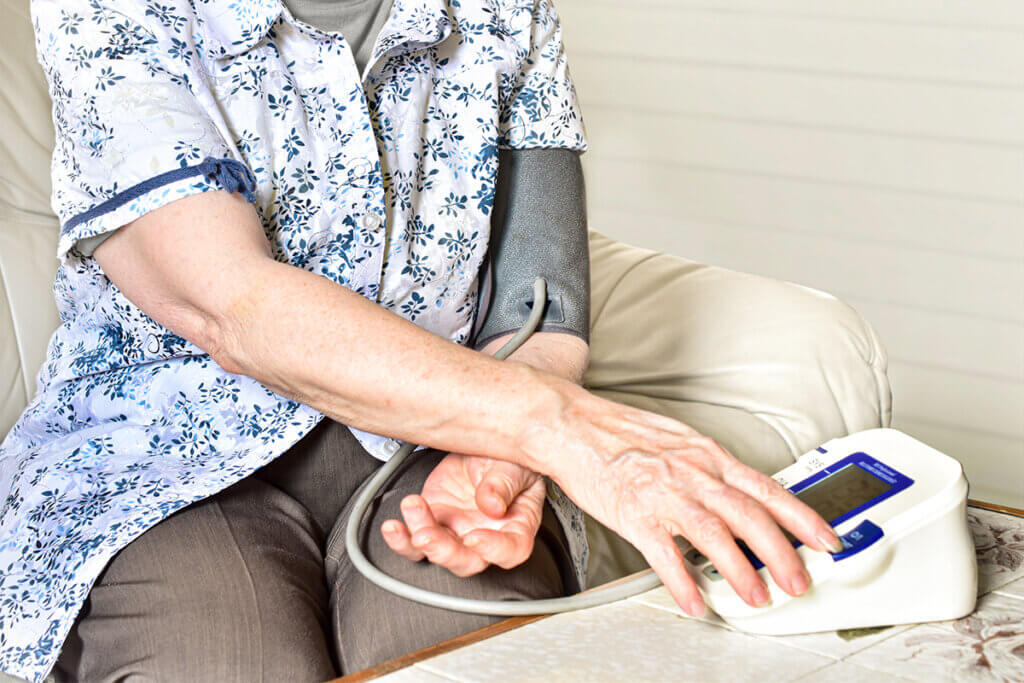
High blood pressure should not be taken lightly. Especially for people who suffer from stress, regular self-monitoring is advisable. High blood pressure is not subjectively perceptible and can only be detected by means of corresponding data. Upper arm blood pressure monitors are a little more expensive and in some cases awkward to use, but they are very durable and provide valid results.
Pro points
- Less error-prone
- Large, easy-to-read display
- Can be used at any time
Drawbacks
- High price
- Possibly awkward to use
How is an upper arm sphygmomanometer constructed?
Upper arm sphygmomanometers consist of two parts: a cuff and a measuring device. The classic version also has a rubber ball that is used to inflate the cuff to create the necessary pressure. Modern devices, however, usually work automatically. The cuff is inflated and the blood pressure is measured automatically. The measured value is then shown on the display of the measuring device. Wrist blood pressure monitors, on the other hand, consist of only one part and look similar to a smartwatch. The measuring device is inseparably connected to the cuff, which is placed around the wrist like a bracelet. Although the small devices are mainly suitable for on the go, the measurement on the wrist is usually somewhat less accurate than on the upper arm, as the arm has to be brought to heart level and held still.
How does an upper arm blood pressure monitor work?
Modern blood pressure measurements are taken using the oscillometric method: the device records the vibrations caused by the pulsating blood vessels in the cuff. A built-in microprocessor uses this information to calculate the blood pressure. Some upper-arm blood pressure monitors work on a different principle: a microphone in the cuff is used to listen to the blood sounds. Some devices also offer both measuring methods. However, neither technique has a significant advantage over the other. Overall, upper arm blood pressure monitors are more accurate than their smaller wrist counterparts. Wrist blood pressure monitors also use the oscillometric method, but because the wrist is further away from the heart and any vasoconstrictions can interfere with blood flow, the results are usually slightly less accurate.
Who needs an upper arm blood pressure monitor?
Older people in particular should check their blood pressure regularly. But people with underlying arterial diseases, heart problems or diseases such as Parkinson’s and diabetes are also well advised to monitor their blood pressure regularly. If the doctor has already diagnosed high blood pressure, then a blood pressure monitor is part of the standard equipment in your household. In this case, it is not only used for general monitoring, but is also part of the therapy: it is used to check whether antihypertensives are working and which is the right dose. People with poor end-vessel perfusion depend on an upper-arm sphygmomanometer, because wrist measurements do not promise valid results. Especially in the case of arteriosclerosis or other anatomical peculiarities of the hand, the measurement at the wrist is unreliable.
What should be considered when buying an upper arm blood pressure monitor?
When buying an upper arm sphygmomanometer, the following points are most important: First, take a look at the available functions and the measurement accuracy of the device. It is important whether it only measures blood pressure or also detects other irregularities. The individual clinical picture or even a doctor’s recommendation is the decisive factor here. Every blood pressure monitor will be tested before it is approved, which is why the product must have a test seal. The German Hypertension League (Deutsche Hochdruckliga e.V. DHL) and the European Society of Hypertension (ESH) and Cardiology (ESC) are two recognised medical societies that place high demands on the devices and whose seals guarantee both the safety and the performance of the products. In addition, the operation and size of the device are decisive purchase criteria. The blood pressure monitor should have a clear, easy-to-use display and a cuff that fits the circumference of your upper arm.
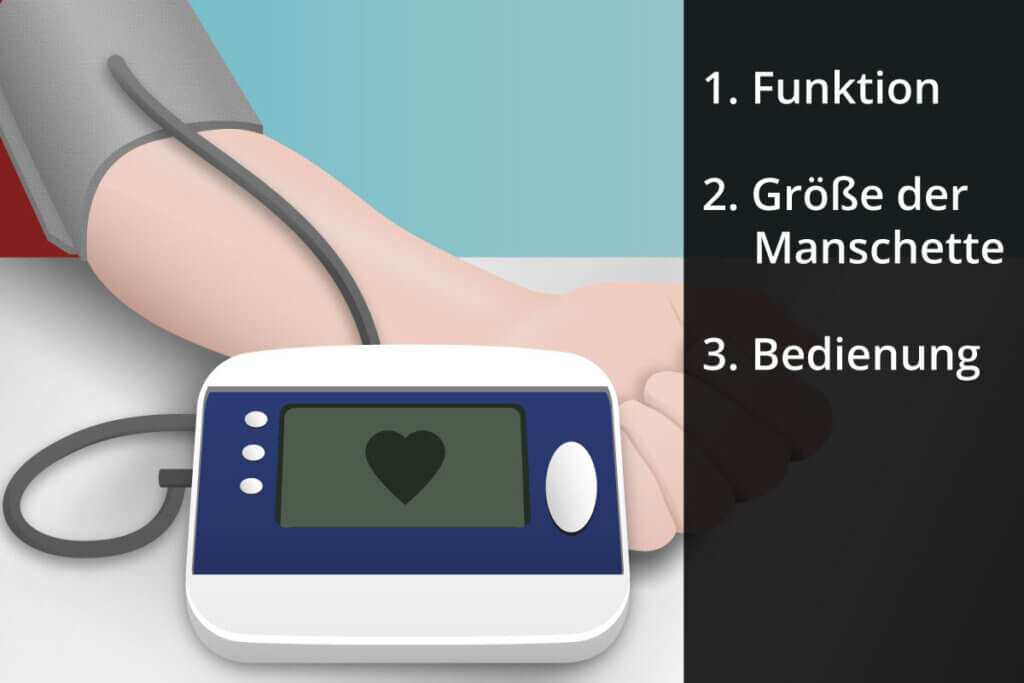
Functions
The main functions of an upper arm sphygmomanometer are the measurement of the blood pressure and the measurement of the pulse. The devices detect any irregularities and possible deviations from normal values. Some models have an integrated scale on which the measurement results are classified according to the World Health Organisation’s evaluation standard. This allows you to draw conclusions about the significance of your readings.
Some upper arm blood pressure monitors have an arrhythmia detection function that detects cardiac arrhythmias such as atrial fibrillation or extrasystoles. Based on the measurements, which should be taken at regular intervals, such as in the morning and evening or every seven days, the device calculates average values. Between 30 and 120 memory locations are common. Integrated ECG electrodes offer another practical function. These create an electrocardiogram that shows the sum of the electrical activities of all heart muscle fibres.
A resting indicator is useful for obtaining particularly accurate measurement results, as it measures not only the specific values but also the time intervals between heartbeats. Devices with built-in inflation technology measure blood pressure while the cuff is being inflated. Some models have loudspeakers that give you the results via voice output. However, this is optional and can be switched off if necessary.
Size
In order for you to be able to measure your blood pressure, the cuff must fit snugly on your arm. However, it must not constrict the blood, which is why the right size is particularly important. Most manufacturers produce their cuffs in a universal size that fits an upper arm circumference of22 to 43 centimetres. Some cuffs are also suitable for smaller sizes of about 20 centimetres or wider sizes of up to 50 centimetres. Thanks to special, particularly small cuffs, blood pressure can also be measured in children and infants. These models are designed for arm circumferences of less than 20 centimetres.
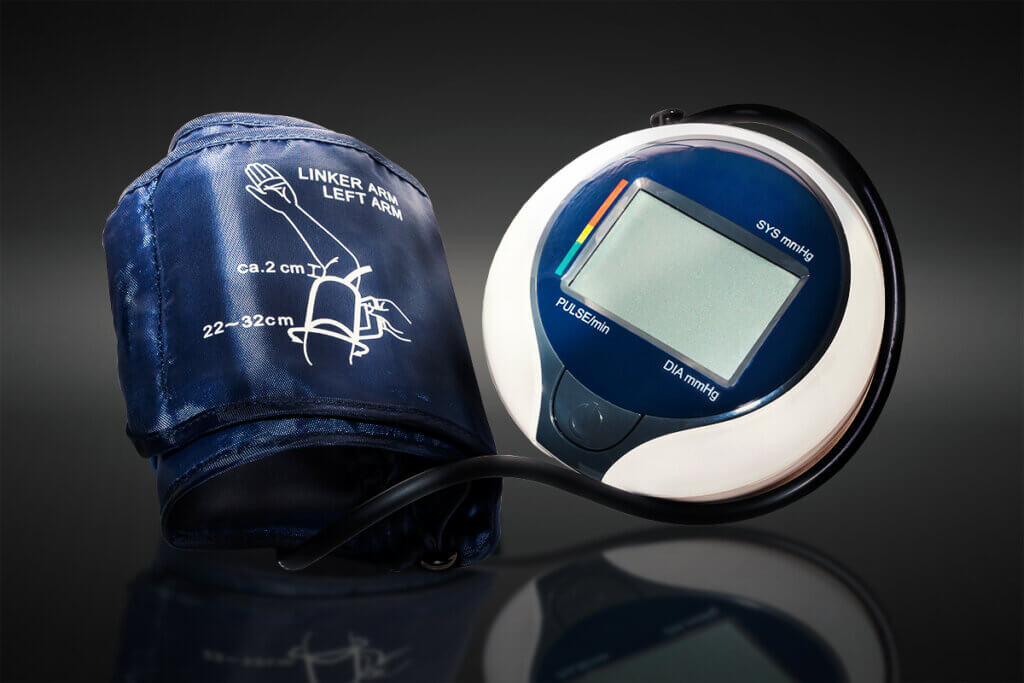
Operation
The operation of an upper arm sphygmomanometer is mostly self-explanatory thanks to a few buttons. If the device has buttons, their number is kept low. However, many models have modern touch displays that can be controlled intuitively like a smartphone or smartwatch. In addition, the screen is usually illuminated so that you can work with it even in poor lighting conditions.
In order to evaluate the values, many manufacturers offer an app or software that you can use on your smartphone or computer. All information and values are clearly displayed and stored here. To transmit the data to a mobile device, most modern blood pressure monitors are Bluetooth-compatible. For transmission to a PC, you can also use a USB cable and transmit the measurements to the software, which collects the values, automatically analyses them and already displays initial forecasts.
With many upper arm blood pressure devices you have the option of creating several user profiles. For example, if you want the device to store the readings of two different people, you can use two separate storage locations for this. This way, a complete history can be displayed for each user and an average value can be calculated. As a result, only one device is needed in a household, even if several people rely on it. Depending on the model, you can store different numbers of measurements per person.
Well informed is half measured
If you regularly use an upper arm blood pressure monitor, you should first be aware of the importance of blood pressure for the body. Furthermore, it is important to know where and how the blood pressure can best be measured.
Blood pressure
Blood pressure is an important vital parameter of the body. The heart rhythm can be compared to a wave-like pumping process: When the left ventricle contracts, blood is pumped into the aorta. This causes the blood pressure in the vessels to rise briefly; this is also called the upper or systolic blood pressure value. The ventricle then has to fill with blood again and starts to relax. This causes the pressure in the blood vessels to slowly fall; this is also called the lower or diastolic blood pressure value. Last but not least, the unit of blood pressure is relevant: This is measured in millimetres of mercury column and abbreviated as mmHg.
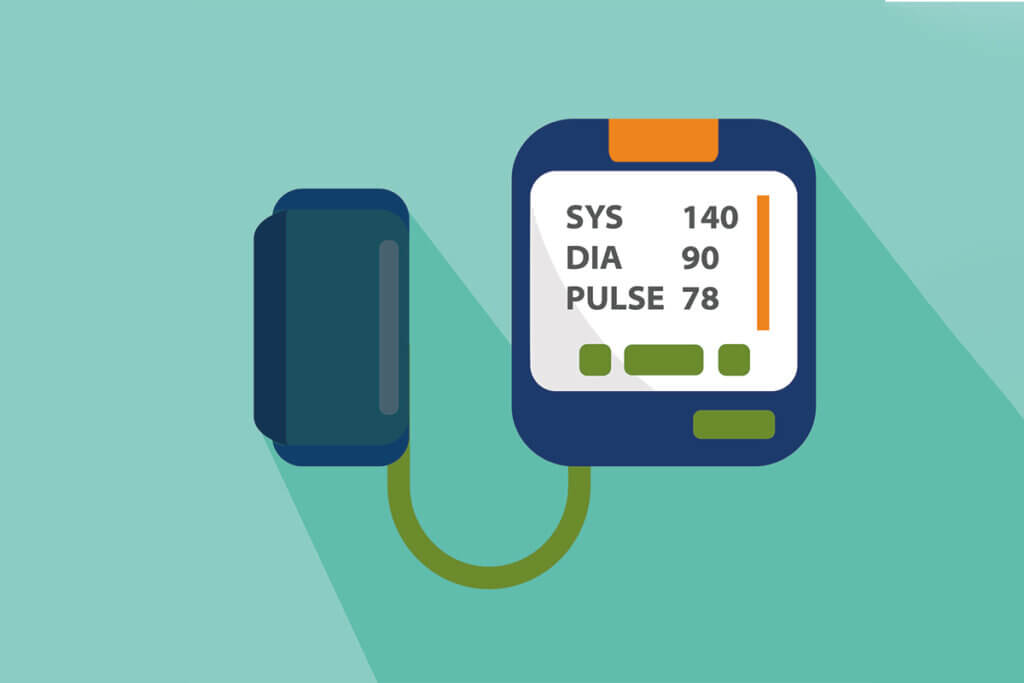
The value describes a range in which the value permanently fluctuates between two individual values. The norm is a value of 120 to 130 to 80 to 85 millimetres of mercury column. The value 120/80 mmHg therefore means that the blood pressure fluctuates between 80 mmHg and 120 mmHg. From a value of 140 to 90 millimetres of mercury column, the medical term for high blood pressure is used. This is considered to be detrimental to health and can even lead to further illnesses if left untreated. Factors such as stress, physical exertion or emotional excitement can lead to high blood pressure. In healthy people, it regulates itself. However, as soon as the body is not given time to regulate the blood pressure, for example due to permanent stress, the organism enters a dangerous range. High age, obesity or vascular diseases can also lead to high blood pressure.
Where is the best place to measure blood pressure?
Blood pressure is measured either on the upper arm or on the wrist, as this is where the vessels are most accessible and close to the heart. The measurement is usually more accurate on the upper arm because the vessels are wider and closer to the heart. The cuff that you tie around your arm measures the rhythmic pressure of the artery.
What should I bear in mind when using an upper arm blood pressure monitor?
Before you start measuring your blood pressure, you should take a short rest. Allow yourself three to five minutes of relaxation and sit down. It is also best to take your blood pressure while sitting down. To obtain comparable values, the time of measurement should be regularly the same, for example in the morning before breakfast. Slip the cuff over your arm and make sure that it fits well. Some devices have a cuff fit control that warns you as soon as the cuff is positioned incorrectly. If it is too big or too small, the results will not be valid.
The manufacturer Beurer has developed a particularly practical mechanism with its easyClip cuff. The cuff is suitable for an upper arm circumference of 22 to 42 centimetres and is particularly easy to put on with one hand. There is a clip on the upper part of the cuff, while the lower part is open. Instead of having to pull the cuff over the entire arm, it is placed on the upper arm with the clip. The remaining part of the cuff can now be tightened around the bottom and fastened with Velcro.

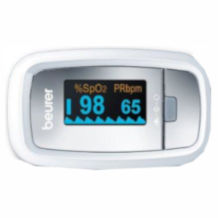
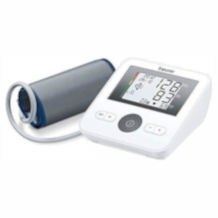
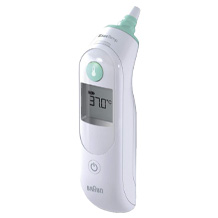
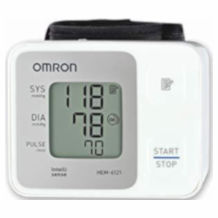
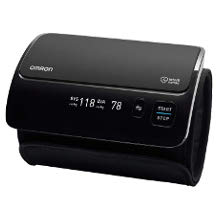
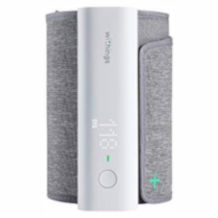
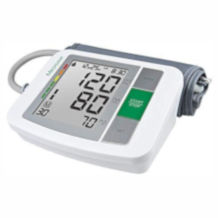
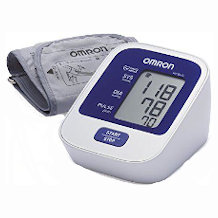
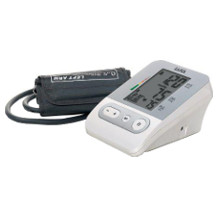
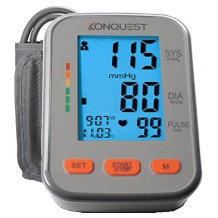
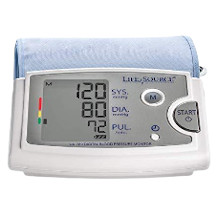

 4,828 reviews
4,828 reviews

